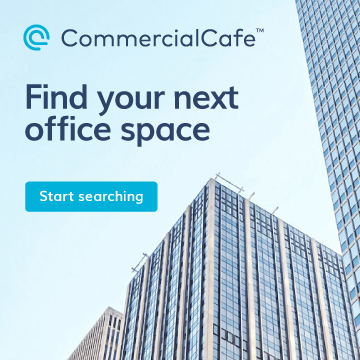
Michael Huber, Siemens Real Estate
Regarding the open office concept, reviews are mixed, but one thing most business owners can agree on is that the cubicle model is no longer viable for attracting and retaining talent. We’ve recently had the opportunity to talk to Michael Huber, Head of Asset & Property Management for Siemens Real Estate, about ways businesses can enhance the open office concept and prepare for the future of workspace design.
The key to a successful open office, according to Huber is to avoid a one-size-fits-all approach when designing a plan. That’s the approach Siemens took with its New Way of Working (New WoW) plan. By working closely with its employees, managers could determine the specific needs and concerns of the office and act appropriately.
To avoid some of the pitfalls of open offices, New WoW spaces have white noise generators to reduce the noise level for those who prefer a quiet environment, and employees also have the option to work remotely while still being able to access important documents. Read on to find out more.
Q: Could you begin by telling us what the biggest advantages of an open office plan are versus the traditional cubicle model?
There is an increased demand for flexibility and collaboration in the modern workplace. Creating a work environment that supports this modern way of thinking is key to fostering innovation at your company and, in turn, boosting profits. For managers, the benefits lie with time management. They can spend less time controlling daily tasks and more empowering individual time management, giving employees the freedom to produce impactful, effective and results-oriented work.
Q: What are the pitfalls of opting for a one-size-fits-all approach to implementing an open office plan?
Implementing an open office plan without regard to customization can be disastrous for productivity. If you, say, reorganize seating without knowing which departments works most closely with each other, you could actually end up reducing productivity. I recommend you think about seating in terms of neighborhoods. For example, your marketing employees should work in the “marketing neighborhood,” while your financial team works in the “financial neighborhood,” so they can foster collaboration.
There are arguments against such seating arrangements, noise level being chief among them. But, anecdotally, I’ve found that non-traditional seating arrangements lead to conversations and idea sharing that may not have otherwise happened and fewer unnecessary emails among team members.
Q: How important is communicating with employees before making any changes to the office plan?
It’s critical. Making big decisions without including your employees in the loop can be damaging to morale and can ultimately be counterproductive. Find out what they like or dislike about the current space and what they want from a new office. Without gathering employee feedback, you could end up making changes that make more work for them.
Q: It’s hard to find a plan that accommodates the needs of everyone — are there alternatives that can be used by specific employees who prefer privacy over an open layout?
Siemens’ New Way of Working (NewWoW) offices have private spaces where employees can work if they prefer a quieter environment. They also have the option to work from home or at other Siemens locations without sacrificing productivity. So, I’d argue that we have the opportunity to allow for privacy in an open office plan.
Q: Do you think having the option to work remotely can have a positive impact on productivity and morale?
Absolutely. Recent studies found that at least 80 to 90 percent of the U.S. workforce would like to telecommute at least part time. It only makes sense, then, to give this option to employees to increase employee satisfaction. But again, it has to be a model that works for both employees and managers. If employees aren’t able to access the important documents they need remotely, productivity will inevitably fall. With our NewWow model, employees can access files from anywhere in the world.
Q: What advice would you give to any employer that would like to make the switch from cubicles or even a traditional standard open office plan to one tailored to specific needs?
Start by talking with your employees. I also recommend taking advantage of technology so you make the most efficient use of your space. You might be surprised by the results. For example, at our Chicago office we implemented occupancy sensors to monitor how space was being used. To our surprise, the data revealed that less than two-thirds of employees were in the office at peak times, indicating that there was room to add staff without leasing or moving to a new building.









